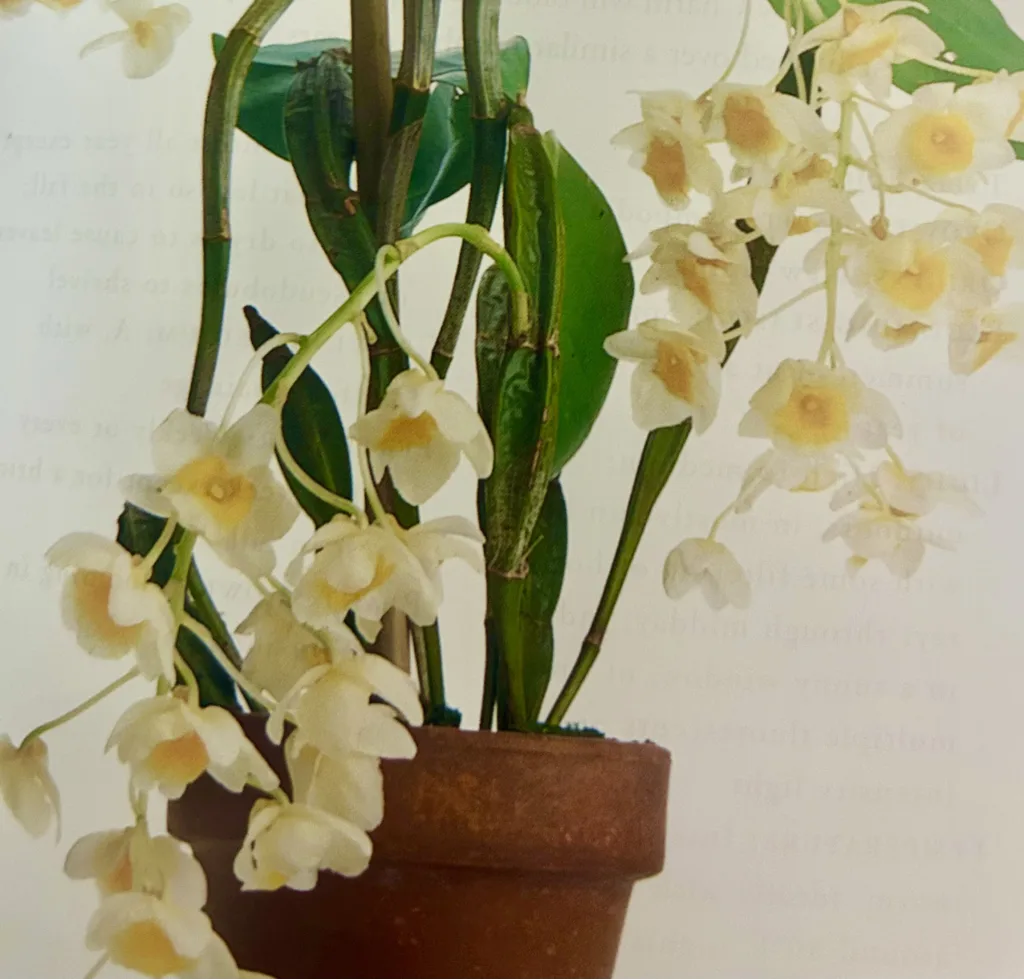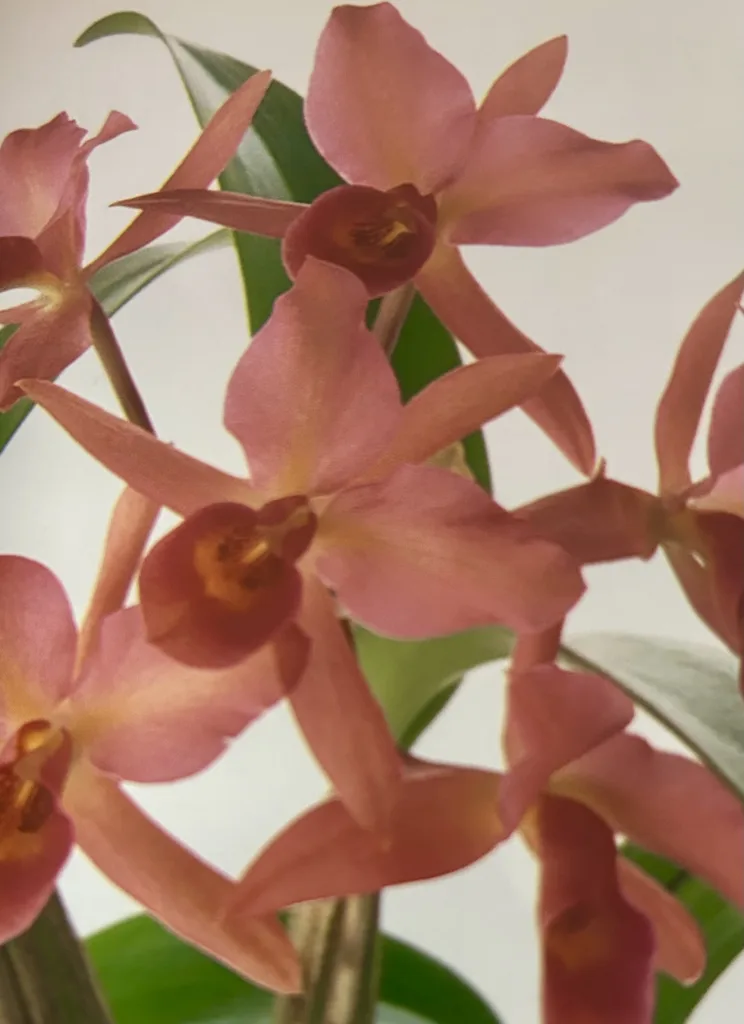Orchids are a popular choice among hobbyist gardeners and plant enthusiasts alike, thanks to their unique and beautiful blooms. If you’re planning to grow an orchid in your home or garden, the Ascocenda orchid is definitely worth considering. This hybrid orchid is a cross of Ascocenda and Vanda known for its large, colorful flowers and delicate compact foliage. In this post, we’ll discuss everything you need to know about the Ascocenda hybrid orchid- what type of orchid it is, its growth habits, environmental requirements, and tips on how to care for it.
What is an Ascocenda Orchid?
Ascocenda orchids are hybrid orchids that are produced by crossing the Vanda, Ascocentrum, and Aerides orchid species. These hybrids vary in their appearance, but they all share some common features. These orchids are known for their bright, large size, and long-lasting flowers. The flowers typically bloom in clusters, with each flower lasting for several weeks. The plant’s thin, strap-like leaves form a V-shape and grow in an upward direction, which gives the plant its distinctive look.
The Ascocenda orchid is an epiphyte with a monopodial growth habit. This means it grows upwards, sending out new growth from the top of the plant. The orchid produces a single stem containing alternate, fleshy leaves that are oblong in shape and constricted at the base. The plant produces multiple aerial roots, which absorb moisture and nutrients from the surrounding air.
Pot Type and Repotting Ascocenda Orchids
When it comes to choosing a pot for your Ascocenda orchid, you can opt for clay, plastic, or ceramic pots. Each type of pot has its own benefits.
Clay pots are porous and allow better air circulation to the roots, which is beneficial for epiphytic orchids like Ascocenda. However, they tend to dry out quickly, so more frequent watering might be necessary.
Plastic pots are lightweight and retain moisture better, reducing the frequency of watering. They are great for beginners, as they are low maintenance and economical.
Ceramic pots, on the other hand, are aesthetically pleasing and provide excellent drainage. They are a good choice if you want to make a decorative statement with your orchid.
No matter the pot type, Ascocenda orchids typically need repotting every one to two years. This process helps refresh the growing medium, promotes better root health, and accommodates new growth. Signs that your Ascocenda orchid needs repotting include an overly crowded root system, breakdown of the growing medium, or noticeable decline in the plant’s health. Repot your orchid in the spring or early summer, which is the start of its active growth phase, for the best result.
Growing Medium for Ascocenda Orchids
The choice of growing medium plays a vital role in the successful cultivation of Ascocenda orchids. It should provide good aeration and drainage while retaining sufficient moisture for the roots. A recommended mix for Ascocenda orchids incorporates various components: 6 parts pine bark, 1 part perlite, 1 part coarse sphagnum moss, and 1 part horticultural charcoal.
Pine bark serves as the primary component of the mix, offering excellent aeration and root support. Perlite improves the drainage and aeration of the mix, preventing water-logging and root rot. Coarse sphagnum moss retains water, providing the necessary moisture for your orchid. Horticultural charcoal is incorporated to enhance drainage and maintain a healthy pH balance within the mix. Together, these ingredients create an optimal environment for your Ascocenda orchid’s roots, promoting healthy and vibrant growth.
Light and Humidity Needs for Ascocenda Orchids
Lighting conditions significantly impact the growth and blooming of Ascocenda orchids. These orchids thrive under bright indirect light. Direct sunlight can potentially cause sunburn on the leaves, so it’s recommended to place them in a location where they can receive filtered light, such as an east or west-facing window.
If natural light is not sufficient, a grow light can be used as an alternative. Grow lights are specially designed to replicate the sun’s spectrum and promote photosynthesis. LED grow lights are recommended for Ascocenda orchids as they offer a balance of both blue and red light, which is essential for the orchid’s growth and blooming. Position the grow light at a distance of about 12-18 inches above the orchid; this range generally provides the right light intensity. Ensure that the orchid gets around 12-14 hours of light each day for optimum growth.
Humidity is another critical factor for Ascocenda orchids’ well-being. These orchids prefer high humidity levels, generally around 60-80%. To maintain such conditions, you can place a tray filled with water and pebbles under the pot, ensuring that the pot itself is not touching the water to prevent root rot. The water will evaporate, increasing the ambient humidity. Alternatively, a humidifier can also be used, especially during dry winter months. This ThermaPro Hygrometer is perfect for monitoring both humidity and temperature.
Remember, while Ascocenda orchids appreciate high humidity, good air circulation is crucial to prevent fungal and bacterial diseases. A ceiling fan on a low setting or an oscillating fan can do the job. But ensure the air isn’t blowing directly on the plant to avoid dehydration. Regular misting is also beneficial, but do not let water accumulate in the leaf axils as this may lead to rot.
Water and Humidity for Ascocenda Orchids
Watering frequency is another key aspect of Ascocenda orchid care. The frequency of watering largely depends on the potting medium and climate conditions. In general, Ascocenda orchids should be watered once the top one inch of the potting medium feels dry to the touch. This typically means watering once every 4-7 days during the growing season and reducing frequency during the dormant period. However, it’s crucial to avoid overwatering as it can lead to root rot.
When watering, do so early in the day to allow any excess water on the leaves and in the leaf joints to evaporate before cooler evening temperatures set in. Use lukewarm water and drench the potting medium thoroughly, allowing the excess water to drain out completely. Do not let the orchid sit in standing water, as it can clog the air spaces in the potting medium, leading to root suffocation and subsequent rot.
In terms of temperature, Ascocenda orchids are warm-growing orchids. They prefer day temperatures between 75-85°F (24-29°C) and night temperatures around 60-65°F (15-18°C). These orchids can tolerate temperatures up to 95°F (35°C) if shading, air circulation, and humidity are increased. However, a drop of 10-15°F (5-8°C) between day and night temperatures is necessary to stimulate blooming. Sudden or extreme temperature fluctuations may cause bud drop and stress the plant, so it’s essential to maintain relatively stable conditions.
Afterbloom Care for Ascocenda Orchids
Once your Ascocenda orchid has finished blooming, it enters a rest period. This period is vital to the health and future blooming of the orchid. During this time, it’s important to slightly reduce watering and avoid fertilizer application, allowing the plant to rest and recuperate. Continue to provide adequate light and keep the temperature and humidity levels consistent.
After the flowering phase, the orchid may produce a spike from which new growths or flower buds will emerge. If the flower spike has turned brown, it’s a sign that it’s spent and can be trimmed down to the base. This allows the orchid to focus its energy on new growth rather than maintaining old structures. If the spike is green, it’s best to leave it alone as it may rebloom.
This rest period is also an ideal time to repot if necessary. Remember to use a fresh, sterilized mix, and be gentle with the root system during the process. Providing the right afterbloom care ensures your Ascocenda orchid stays healthy and is primed for a robust blooming phase in the coming season.
How to Get Ascocenda Orchid to Rebloom
Getting an Ascocenda orchid to rebloom involves a few critical steps. Once the orchid has completed its blooming cycle and entered a rest period, start by reducing watering slightly and stop fertilizer application. During this recuperation stage, the orchid is gathering energy for its next blooming phase.
Pay attention to lighting: Ascocenda orchids need sufficient light to rebloom. If your orchid leaves are a healthy green color, it’s likely receiving the right amount of light. If the leaves are dark green, it may need more light, and if they have red spots, it may be receiving too much light.
Next, consider temperature. An important factor for flowering is a difference in day and night temperatures. Ascocendas require a gap of around 10-15°F (5-8°C) to stimulate blooming.
Lastly, when new growth appears, begin applying a balanced orchid fertilizer to provide the necessary nutrients for blooming. Growth generally begins in the spring, so this is typically the best time to start fertilizing again.
Sticking to these rules should help your Ascocenda orchid rebloom successfully. However, remember that patience is key—orchids often operate on their own timeline, and forcing them to bloom can cause stress that affects their overall health.
Pest and Disease Management in Ascocenda Orchids
Like any plant, Ascocenda orchids can be susceptible to pests and diseases. Common pests include mealybugs, aphids, scale, and spider mites. These pests can be identified by the damage they cause or their physical presence on the plant. Mealybugs appear as white, cottony masses, while scale looks like small brown spots. Aphids are tiny green or black insects, and spider mites cause a fine webbing and speckled discoloration on leaves.
To control these pests, start by isolating the infected orchid to prevent them from spreading to other plants. Remove visible pests using a cotton swab dipped in isopropyl alcohol. For a more widespread infestation, consider using a suitable insecticidal soap or a systemic insecticide, ensuring you follow label instructions for orchids.
Fungal and bacterial diseases, such as black rot, root rot, and leaf spot, can also affect Ascocenda orchids. These diseases often present as black, brown, or yellow spots on the leaves or roots. Overwatering, poor air circulation, and inadequate hygiene are common causes for these ailments.
To prevent and treat these diseases, ensure your orchid has proper ventilation and avoid overwatering. Remove diseased leaves or roots using a sterile tool and apply a fungicide or bactericide suitable for orchids. Always remember to sterilize your tools before and after use to prevent the spread of diseases.
Lastly, good cultural practices are the best defense against pests and diseases. By providing your Ascocenda orchid with the right light, temperature, water, and care, you’ll keep it healthy and more able to fend off pests and diseases.
Happy Orchid Gardening!
In conclusion, if you’re looking to grow a beautiful and unique orchid, the Ascocenda orchid is an excellent choice. These vibrant plants are easy to care for and will reward your patience with a spectacular display of color. With proper care, you can enjoy the plant’s stunning blooms for several weeks. Just remember to provide them with the necessary warm, humid, well-ventilated environments, and regular fertilizing and watering. By doing this, your Ascocenda orchids will thrive in your home or garden for years to come.
Please be sure to check out my Gardening Blog Post Page for more tips on all types of gardening. Including Orchids, Water Gardening, Coldframe Gardening, Indoor Bulb Gardening, Hydroponics, Container Gardening, Mums, Herbs, African Violets, planting Bulbs, Flower Gardening, Vegetable and Fruit Gardening, Indoor Houseplants of all kinds, Cactus, Succulents, Hanging plants, Deer resistant plants and even Bird, Bee, Butterfly and Hummingbird Gardens!













